

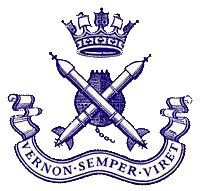
In the early spring of 1941 Roedean School for Girls at Brighton, East Sussex was selected by the Admiralty to become new home for the Royal Navy's torpedo, and electrical training establishment. Ab advance party, under command of Lieutenant J. R. Carr, arrived at Roedean on April 7th 1941.
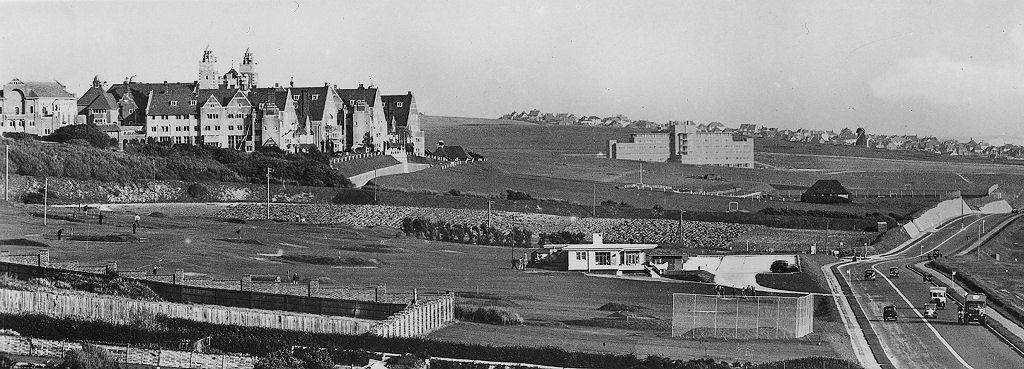
At this time part of the school, number three house, was in use by the Army which had moved in shortly after the girls' school had evacuated to Keswick in the Lake District. The War Office commandeered the school as soon as it was vacant, and the advance party of army personnel had arrived on August 3rd followed by a much larger contingent on the 5th. Initially a contingent of Argyll and Sutherland Highlanders arrived for training, followed by the Queen's Royal Regiment, then four Canadian regiments and the London Scottish, who were in residence when the Navy arrived.
Number three House was the only part of the school properly 'Blacked out' against air raids at the time, so work began immediately to prepare the remaining buildings for occupation, contract labour being brought in to complete the work. As accommodation became ready for occupation Lieutenant Carr telephoned Portsmouth to send another batch of ratings to Roedean, often on a daily basis; all of this work and moving in being undertaken before a firm decision about who would actually occupy the site had officially been taken.
It has passed into naval lore that before the navy moved into the school the Captain insisted that all of the female pupils should leave; it was rumoured that some of the sixth formers were still in residence. The mistress in charge, reportedly replied "my girls will be all right; they've got it up here" tapping her head" to which the Captain answered "Madam, it matters not where your girls have it, rest assured my sailors will find it!" This makes for a good yarn, but is of course all fiction as the dates prove.
The Army was reluctant to vacate the site but a compromise was reached - the Navy would occupy the parts of the school not already in use by the Army - a situation which was not to last for long though, the Admiralty putting forward the best case for ownership in Whitehall. The Army was shortly to receive a message which read; "unless alternative accommodation has been arranged, number of tents required is to be indented for" - this was the first they knew of their immanent eviction! They eventually relocated to 'The Olde Place' hotel in Rottingdean, a short distance along the coast.
Roedean was officially commissioned as HMS VERNON (R) on May 3rd 1941 as the Headquarters of the Admiralty torpedo, mining & electrical training establishment under the command of Captain Brian Egerton, RN. The base accounts were held at Mowden School, the Droveway, Hove, a site already occupied as HMS KING ALFRED II since 1940; VERNON main store was also installed at Mowden School by mid-July 1941.
The establishment provided intensive training courses in torpedoes, mines, depth charges and shipboard electrics. Note: (R) denoted VERNON at 'Roedean', with VERNON (P) being the residual elements of the establishment at Gunwharf, Portsmouth.
The main building at Roedean School has its main entrance facing the south, with four north/south oriented 'Houses' these being numbered 1 - 4; viewed from the cliff top house numbers run left to right. In front of the main entrance is an open area referred to as the quadrangle, at its south edge is a stone balustrade offering an uninterrupted view across the grounds and along the coast road to Brighton and Rottingdean. The area of the balustrade was referred to by the navy as the 'Quarterdeck', a revered area within a shore establishment, the site of the flagstaff flying the Naval Ensign - the Quarterdeck must be saluted by naval personnel when passing as a mark of respect. The School's quadrangle doubled as a parade ground, the site of Sunday divisions (parade of ship's company before church) at which the men and women of HMS VERNON would be addressed by the Captain and inspected.
Before the end of the first year, more space was needed, both for accommodation and instruction; few rooms at Roedean were large enough to hold lectures for 200 men with the exception of the main hall, the gym, and at first the art school which later became part of the Wardroom. Suitable premises were found by requisitioning St Dunstan's Home for the Blind at Ovingdean. This new building had opened in October 1938, but like the Girl's School a quarter mile down the road, the organisation had been evacuated, going to Church Stratton, Shropshire in 1940. This site was used for several purposes, including an electrical instruction 'school', HMS VERNON's central pay office, sub-lieutenants' sleeping quarters and the ratings canteen and bar.
From September 10th 1942 members of the Women's Royal Naval Service (WRNS) began arriving to take the six week long Seaman Torpedoman's course; up to sixteen WRNS ratings a week. This was a new specialisation for women serving in the RN as WRNS personnel were increasingly filling shore-based roles in order to free up men for sea duty. New premises were requisitioned at 90 Marine Parade, and 14 Royal Crescent Brighton as accommodation and instructional classrooms for these courses. WRNS were given separate instruction from male ratings. In the first year of this new course 684 WRNS (T) had completed the course, only nine failed.
The number of personnel at Roedean was to rise steadily over the course of the war; rising from approximately 150 officers, 1,000 ratings and 100 Wrens during first year, increasing to about 250 officers - including 19 WRNS Officers, 1,500 ratings and up to 600 Wrens per year. Numbers would have been even higher had the Mining Instruction School not moved back to VERNON (P) in August 1943. Over the course of its four years in Brighton VERNON (R) requisitioned further sites in the Brighton area, both for accommodation and instructional purposes.
Sites occupied by HMS VERNON in Brighton and Hove included:
Before the end of 1942 Admiral Sir Charles Little visited Roedean; as Second Sea Lord he had been instrumental securing Roedean for VERNON. The establishment had no bugler or band, so the relevant musical salutation was played over the tannoy system from a radio-gramophone. The Electrical Artificer working the apparatus was so excited that he forgot to lift the needle from the record after it had played the 'Alert', and to everyone's horror the loudspeaker system began blaring "God Save the King" In his speech the Admiral said he had received many welcomes in his time, but this was the first occasion he had received a Royal welcome!
Many ratings arriving at Roedean School thought the place looked gothic and creepy, as they looked up at the imposing buildings from the sentry post at the gates. Large proportions of these men were fresh out of basic training and were still wet behind the ears, while seasoned hands found Roedean a big change. The navy still used hammocks, both at sea and in many cases ashore, slung in large communal spaces, each man carried his own hammock from ship to ship as a part of his personal kit. The small rooms (three men to a room) and single ‘cabins’, all with bunks that formed the accommodation at Roedean were an unheard-of luxury.
It is rumoured that the first batch of trainees to be billeted at Roedean received a rude awakening after eagerly pressing a small button found above every student's bed – a small label carried the legend 'Press if you need a mistress for any reason during the night'. After the bell at the other end had been rung to near destruction and the members of the duty watch had been driven mad, the only person to arrive in response to their requests was an irate Chief Petty Officer promising unmentionable consequences for touching the button ever again! The buttons were subsequently disconnected! Officers attending VERNON for courses could be billeted ‘ashore’ in Brighton, Rottingdean or other local villages, some married men brought their wives down to join them.
Besides the Naval personnel of HMS VERNON there was a large number of civilian staff, some were hired locally to fill domestic positions, others such as Draughtsmen moved from Portsmouth with the establishment and lodged in the local area. In Portsmouth many of these men had been a part of their local Home Guard unit and they were eagerly welcomed into the ranks of the Rottingdean Home Guard by their Commanding Officer Colonel Percy Filkins, M.C., a local farmer from Ovingdean. Ratings from VERNON helped out on Colonel Filkins’ farm on occasion, including harvest time.
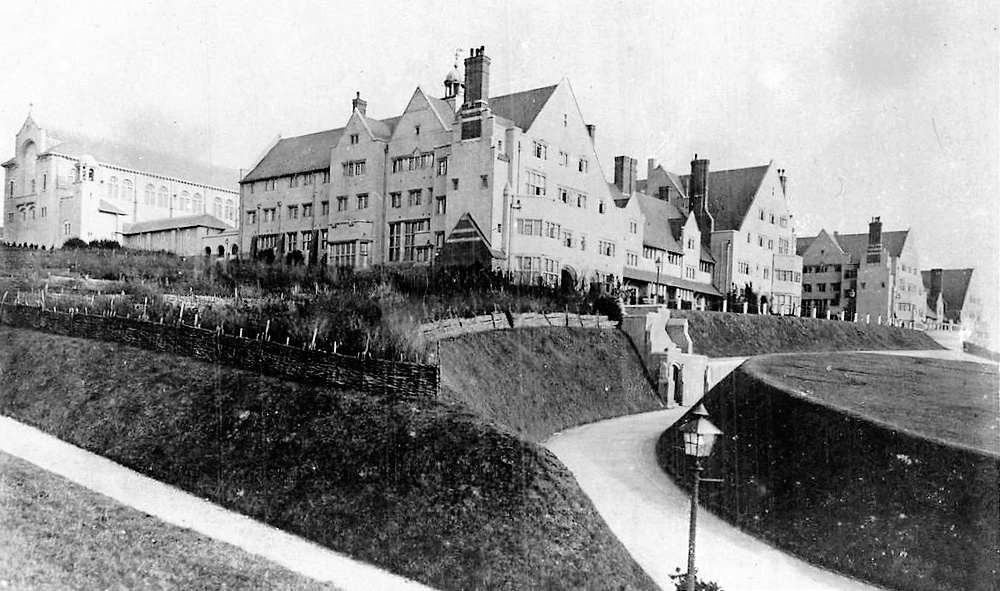
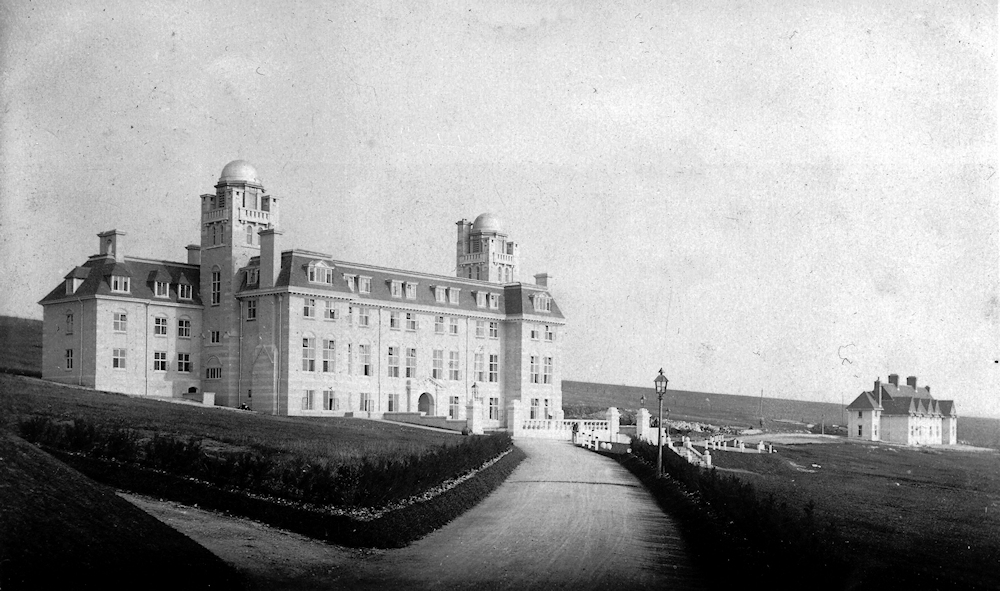
Instruction was given Monday to Friday and Saturday mornings, involving marching six or seven hundred men into the workshops in and around Brighton twice a day for instruction and back, some as far away as the Dreadnought Garage site in Hove. The daily routine was quite intensive, consisting of – breakfast, classes, lunch, classes, tea, classes, and dinner. There was little free time other than Saturday afternoon and Sunday. After Sunday Divisions some of the men would to go to Neville House, a family hotel at Black Rock (164 -165 Marine Parade Brighton) for tea, biscuits and a read of the Sunday papers. Other popular off duty pastimes in Brighton included ice skating, attending the Hippodrome theatre, and dances at the Dome or at the Regent Ballroom.
A number of those who served at HMS VERNON were locals, young women recruited to fill posts in the various sites as ‘immobile Wrens’ – enlisted into the WRNS but for service only in a specified area around their home. These Wrens wore the same uniform as regular WRNS and had the same duties and responsibilities but they lived at home and could not be drafted outside their home area. Jobs filled by ‘immobile’ Wrens included cooks, stewards, typists and store clerks; many would have worked in the St. Dunstan’s Ovingdean site where the pay office was located and junior officers were accommodated. Wren Steward Lois Lade (nee Price) was one such ‘immobile wren’ she enlisted in November 1941 for work in the Brighton area and was allocated to HMS VERNON the following month for duties as a Wardroom Steward. She cycled the 2 miles from her home in Mayo Road to Roedean every day. In 1945 she was promoted to Leading Wren Steward (O) and married Rifleman Christopher Lade of the Royal Sussex Regiment on VJ Day.
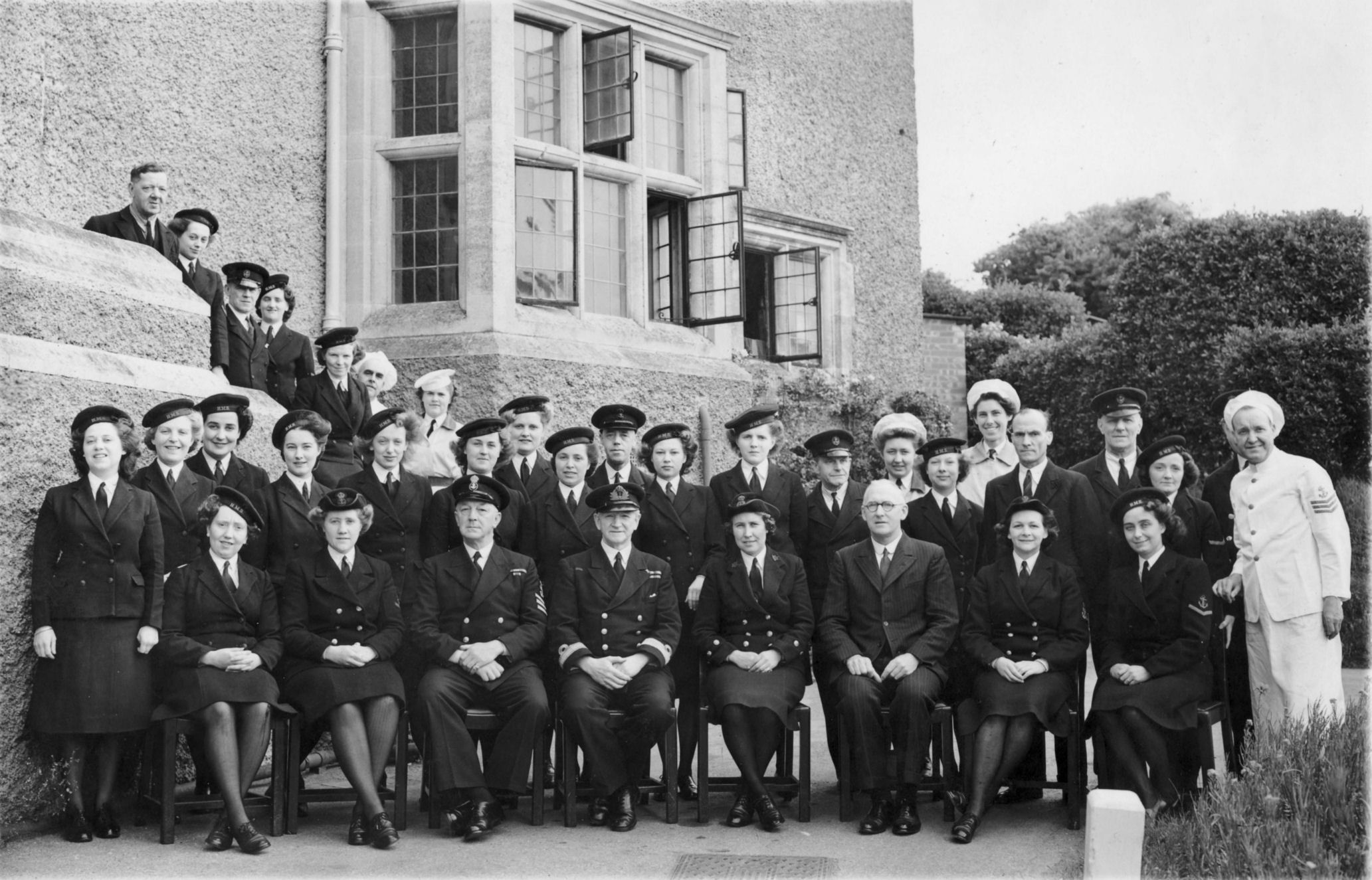
In March 1944 the establishment received a Royal visitor when Princess Marina, the Duchess of Kent came to inspect the Wrens and stayed to lunch at John Howard House. Miss Tanner, the Headmistress of Roedean School, was a frequent visitor to HMS VERNON (R), for ‘tours of inspection’; she took the threats of the RN returning to visit after the war - to see if the place was as clean as a girls’ school as it was as a naval establishment - in her stride. She was a popular guest, so much so that on September 6th 1944 she was invited to take the salute at the weekly march past of divisions, Miss Tanner carried it off with great distinction.
There were two marriages held at Roedean during the naval occupation. Electrical Artificer Jack Parsons and Leading Torpedoman Felix McClusky marrying Wrens that they had met while attending courses at VERNON (R); Felix married Dorothy in 1942 while Jack married Violet in 1943.
Games and organised sports helped VERNON (R) to keep a good liaison with the neighbouring naval establishments – HMS King Alfred at Hove and Lancing and HMS Marlborough at Eastbourne College, as well as the Canadian and British Army units stationed around Brighton, and the National Fire Service School at Rottingdean. Hockey, cricket and tennis, saw the games fields at Roedean put to good use. Several officers took in part in hockey matches, with the Wrens fielding a team which gave them some good matches. It is not clear whether there was a VERNON (R) football team but the ratings did ‘knock about a football’ in their brief spells of spare time, usually between finishing meals and mustering to march off for instruction. Often some of the local girls who worked at VERNON joined in the kick about; 93-year-old Miss Laurie Hollands of Ovingdean, an ‘immobile Wren’ recalls how they would rush to finish their duties in time to join in with the lads. Roedean School also had a swimming pool which went some way to making up for the beach being off limits, being both wired and mined.
© 1999-2024 The Royal Navy Research Archive All Rights Reserved Terms of use Powered byW3.CSS
Comments (4)
Where can i find the Information on personnel serving at HMS VERNON in 1956 . I am looking for info on a Kenneth Murchison Mackenzie, able seaman P/JX924610.Thank you.
Does anyone know how WILLIAM JAMES GULLIFORD died whilst serving with this unit in March 1941? Buried in Faversham, Kent.
Would details of the deaths of personnel based at Vernon be a matter of public record? I am looking for E.Harding who is listed as dying there on March 24th 1944.
Do you have any names for the pictures of the Wrens? I am trying to find out about Rhoda M Sprague (1906-1994) who joined the WRNS in 1941 (rather on the older side, at age 35) and was at Vernon. She rose to PO by the time she was demobbed in 1945.
Thanks